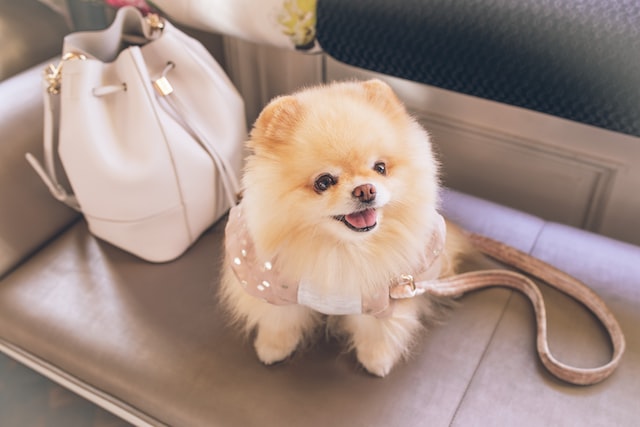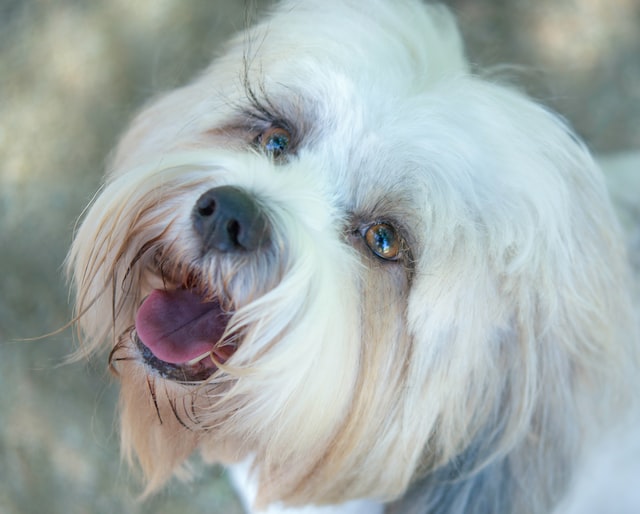The Pomeranian

One of the easiest dogs to train, that you’ll ever come across, the Pomeranian is loyal and doting pet whose eager to learn new tricks and please you, makes training them a walk in the park. Also called the ‘Pom’, they are the perfect combination of wanting to cuddle with you indoors to being up for a walk when the time is right.
Poms are known to be quite territorial which actually makes them quite the pick for watchdogs. They’re quick to sense any suspicious strangers and bark to announce their unwanted arrival. Being an indoor dog, it might take time to housebreak them at first. Adapting well to older children, younger children and other house pets tend to make the Pomeranians a little nervous. If raised with other house pets, you should experience no trouble.
A few things you would want to prepare yourself with- don’t let the Poms on anything at a height. Because of their small size, they are prone to injuries should they topple to the ground. Known to be picky eaters, their food intake needs to be monitored and regular trips to the canine dentist is a must; formation of tartar is a frequent occurrence.
Sensitive to warm weather, Pomeranians often seek out cool places or enjoy a splash in their water bowl. You could lay down a wet sack for them somewhere in the balcony or the yard so they can cool off the heat without suffering too much…
Care & Health:
- Major concerns: patellar luxation
- Minor concerns: open fontanel, hypoglycemia, shoulder luxation, PRA, entropion
- Occasionally seen: tracheal collapse, PDA
- Suggested tests: knee, eye, (cardiac)
- Life span: 12 – 16 years
- Grooming: You could either brush the coat daily to avoid clumps of fur all over the house or give the Pom an occasional brushing.
History:
The Pomeranian is said to have come from the region of Pomerania, an area that included parts of both Germany and Poland. The name ‘Pomeranian’ was bestowed upon the breed, when it was brought to England, in honour of its homeland and recognized by the English Kennel Club in 1870.
Today’s Poms are a lot smaller than what they were in the late 1800. They were bred to a smaller size fit for city life. In 1888, Queen Victoria was gifted with a Pomeranian, and the breed’s association with this influential monarch did much for its popularity all over the world. By 1900, the Pomeranian had been recognized by the American Kennel Club and today, the Pomeranian’s manageable size and feisty character have made it one of the most popular breed.
As of 2007, the Pomeranians rank 13th out of 157 breeds.
The Lowchen

The Lowchen, fondly referred to as the “little lion” is quite like the lion in more ways than one. Just like the lion will protect his pride, the Lowchen too will protect their family in return for love and compassion. If a lion could be morphed could be into a house pet, it would be called the Lowchen. Doting as ever, the Lowchen will follow you from room to room, craving companionship, making it difficult to leave them alone for too long.
In their attempt to protect the people they love, the Lowchen do tend to bark a little more than necessary. They can be taught to control their barking when training them. Since they are eager to please, it makes it really easy to train them. That being said, once they know that the stranger possesses no threat to the family, they are quick to make friends- be it people, other dogs, cats or other house pets.
The Lowchen are known to adapt comfortably to other house pets and children of all ages. With an affinity for chasing squirrels, while taking them for a walk outdoors, it’s best to put them on a leash, lest they bring back a dead squirrel or two.
A lively, happy and sensitive dog, not many appreciate and know the affection the Lowchen is capable of. Deemed as the rarest breed in the world, it’s time the world knew about the “little lion”…
Care & Health:
- Major concerns: none
- Minor concerns: patellar luxation
- Occasionally seen: none
- Suggested tests: none
- Life span: 13 – 15 years
- Grooming: Brush their coat on a daily basis to avoid tangles since they don’t shed much. To maintain the traditional lion trim, clip their coat short once a month although many owners prefer to maintain a puppy clip.
History:
Hailing from the sacred town of Lhasa, known in Europe from around the 16th century, the Lowchen means “little lion” in Germany. The Lowchen gets this name due to the lion like mane that hangs around its mouth. Though they symbolized aristocracy and nobility and appeared in many painting in Spain, Italy and Germany, the Lowchen did indeed face possible extinction during the World War II, making them the rarest dogs of that era.
Belgium breeders are said to be credited for salvaging the breed and helping them regain their popularity and fame in the 1970s when the breed was introduced to Great Britain and United States. The AKC admitted the Lowchen under the non-sporting category in 1999 and as of 2007, their popularity ranked 139th out of 157.
Even today, they are the rarest breed in the world.
